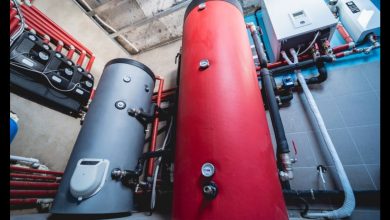Post-Move Office Setup – Tips for a Smooth Transition

Moving your workplace is a difficult task that’s not over even after the commercial removalists have carried in the last box.
The actual process usually starts after the relocation.
Ensuring minimum downtime and enabling your staff to feel comfortable in their new surroundings depends on the proper setup of your new workplace. From furniture placement to technological setup, there is much to think about to ensure your move goes as seamlessly as it should.
These ideas can help you through the post-move setup, transforming what might be a challenging process into a seamless one, whether your relocation is necessary to house a growing team or just for a better location.
Plan Ahead and Create a Setup Checklist
A good transition depends on a setup checklist even before the moving vehicles show up at your new business. Once you are in the new place, this list should cover all the necessary tasks. Consider it your route map, helping you negotiate the anarchy of unpacking and organising.
Add things including furniture placement, IT configuration, safety inspections, and décor placement. To maintain order and efficiency, designate particular team members or departments for these chores.
Not only will a good checklist keep you on target, but it will also guarantee that no important element is missed.
Clear knowledge of your new office layout is another component of pre-planning. Work with your commercial removalists to guarantee that every item finds its proper place straight from the start. This speeds up the general setup procedure and helps to save the effort of later moving bulky furniture.
Prioritise the IT Setup and Getting Your Team Back Online
The IT setup of your post-move office is one of the most important elements. Without phones, internet, and laptops operating, your staff cannot function as it should.
Make sure your IT staff has evaluated the newly acquired office space and found ideal locations for printers, servers, and network connections before relocation day.
Starting right away, arrange the server room. The tech infrastructure of your company revolves around this area. Make sure every cable is correctly connected to where it’s supposed to be; nothing worse than a jumble of wires which nobody knows what to do with.
Examine all systems carefully; test the internet connection, make sure phone lines are operational, and quickly fix any connectivity problems. Having a tech specialist on hand throughout the relocation will also help to manage any unanticipated issues. Your staff can start working faster as soon as your tech is running.
Unpack One Space at a Time
Unpacking can be overwhelming, especially when there are heaps of boxes to deal with. The secret is to approach it deliberately, paying one area at a time as a top priority. Start with the most important places—workstations and conference rooms—then work on less important areas like the break room or storage closets.
Beginning with the basics—computer, monitor, keyboard, and mouse—set up every desk. Verify that every workstation is in perfect operation and that all wires are kept orderly. Encourage staff members to examine their own areas to find comfort and arrange personal belongings as best for them.
Spaces for team meetings should also be a priority, particularly in case your company mostly depends on teamwork. Check the arrangement and operation of the conference table, seats and AV tools. Apart from looking professional, a well-prepared conference room guarantees that team meetings go without a hitch.
Focus On Furniture Arrangement
The arrangement of furniture affects your team’s comfort and efficiency. Your aim should be to design a layout that promotes efficiency and clear traffic flow across the workplace.
Where at all possible, arrange desks to maximum natural light; this will help to increase satisfaction and output.
Make sure the distance between workstations allows for a reasonable degree of privacy as well as adherence to any health and safety rules. If your workplace features ergonomic chairs or standing desks, be sure they are set up correctly to prevent pain or injury.
Don’t forget rooms like the break room or kitchen. These areas are rather important for staff morale so make them useful and appealing. To establish a friendly space where your team may unwind and re-energise, think about including plants, cosy chairs, and a coffee station.
Communicate Clearly with Your Staff
Clear communication is absolutely essential as a new office sometimes comes with new policies. Give your staff a thorough review of the new office configuration following the relocation.
Emphasise key areas, including bathrooms, break rooms, emergency exits, and shared facilities. This will enable everyone to comfortably explore the new environment.
If you have changed policies on desk sharing, meeting room reservations, or shared spaces, for instance, make sure all staff members are properly informed. Your staff would also benefit from a quick office tour or an email including floor plans and critical information.
Promote honest comments throughout this changeover phase. Your staff members may offer insightful analysis of how the new arrangement is doing or ideas for little adjustments that might enhance the area.
Making changes and paying attention to comments reveals that you appreciate their opinions and are dedicated to establishing the finest possible working environment.
Make the Space Feel Like Home
It’s time to personalise your new office once the basics are in place. More than merely making the area appear good, decorating contributes to a favourable environment that might increase staff satisfaction and production.
Incorporate the values, colours, and brand of your business into the décor to make the area feel truly yours.
Put some life and freshness into the office with plants. Plants not only help to clean the air but also have been known to lower stress and boost output. To add a personal touch and make the room inviting, hang team pictures, inspirational sayings, or artwork on the walls.
To improve comfort, think about using wrist supports, footrests, and monitor risers. Little things like this let your staff know you value their welfare and can significantly affect their attitude at work.
Celebrate the New Space
A team welcome event may be a fantastic way to raise morale and enable everyone to settle in better. It doesn’t have to be anything special; a straightforward lunch, coffee morning, or after-work drink will help your staff relax.
Leverage the event to strengthen your business culture and give the new office a fresh start. Share your ideas for the new location, underline any interesting aspects, and congratulate your staff for their diligent effort throughout the relocation.
New team members have a fantastic chance to get to know their colleagues in a laid-back environment as well.
More than just a celebration, a welcome event is a means of strengthening community and enabling your team to feel connected at the new office. It provides the ideal last touch for your post-move arrangement.
Conduct a Final Walkthrough
Take a last inspection of the whole premises before formally announcing the office transfer complete.
Make sure every location is clean and ready for usage, tech is totally functional, and all furniture is positioned correctly. Check for any safety concerns such as broken fire exits, wobbly furniture, or unsecured cables.
Get comments from your staff on their desks and take care of any issues right away. This stage allows you to make any last-minute adjustments meant to increase comfort and usefulness. Remember, a seamless transition is about building a workspace that helps your team succeed rather than finishing the last unpacked box.
Conclusion
Although moving an office is a big project, with the correct strategy your new location will soon be a lively and useful area for your staff.
You can guarantee a seamless transition and a good start in your new workplace by advance planning, giving critical areas like IT and furniture arrangement first priority, and paying close attention to the little things.
Remember, it’s about preparing the ground for success, development, and cooperation in your new house—not only about moving in. Thus, stop to value the fresh start and see how well your staff performs in their new environment.





